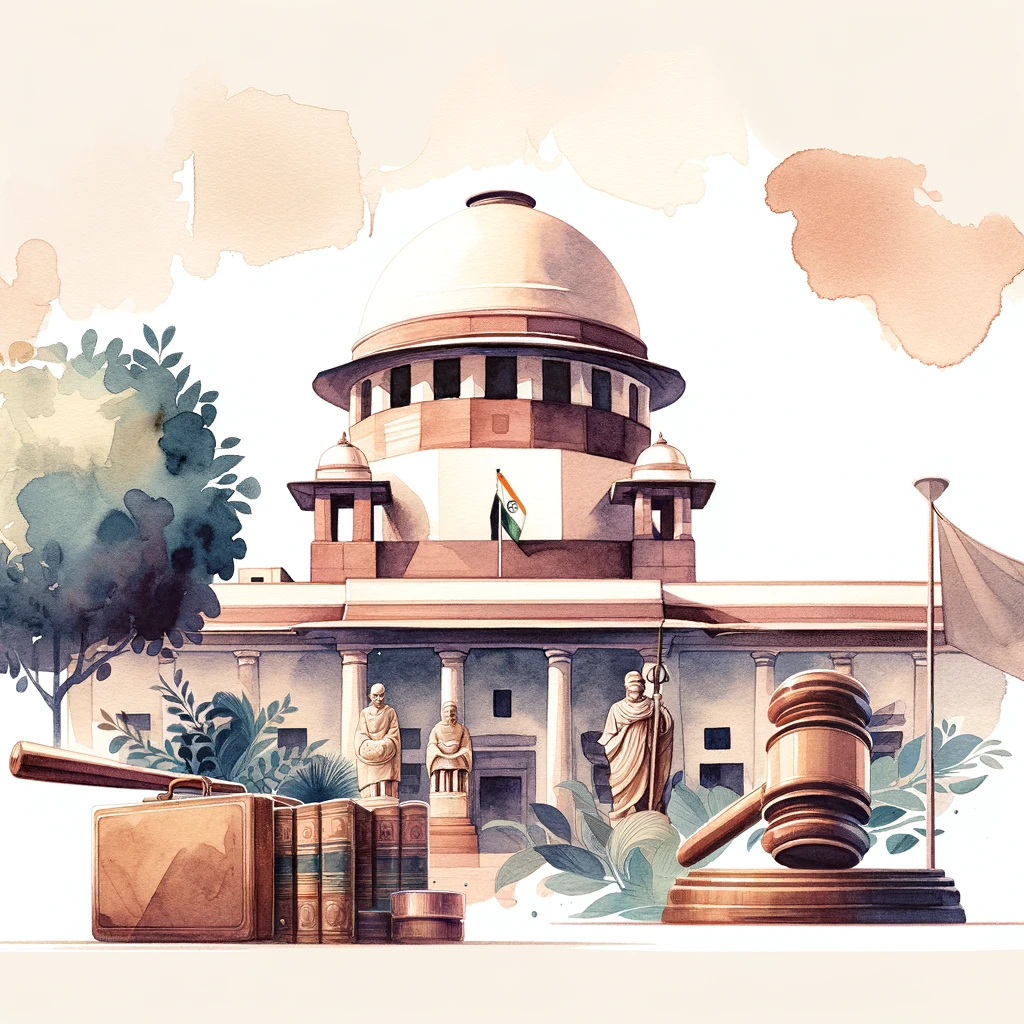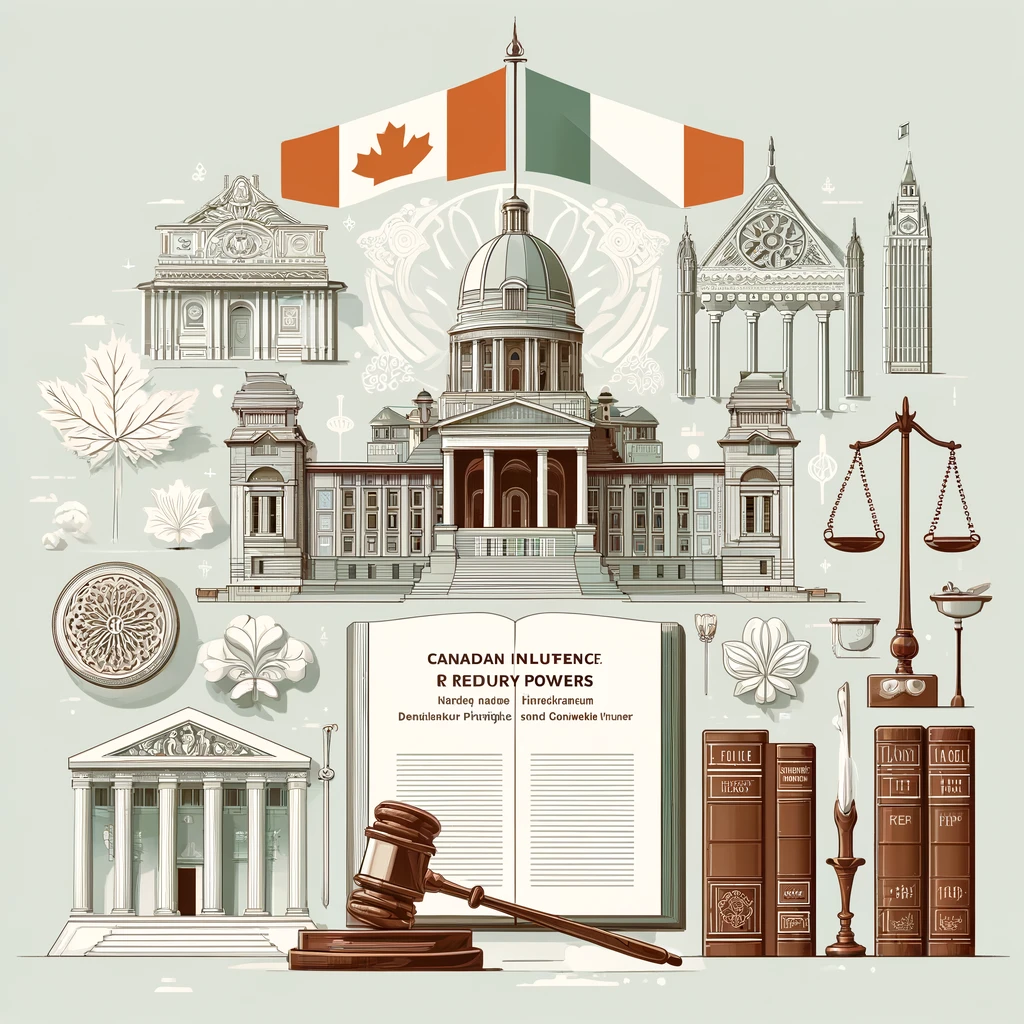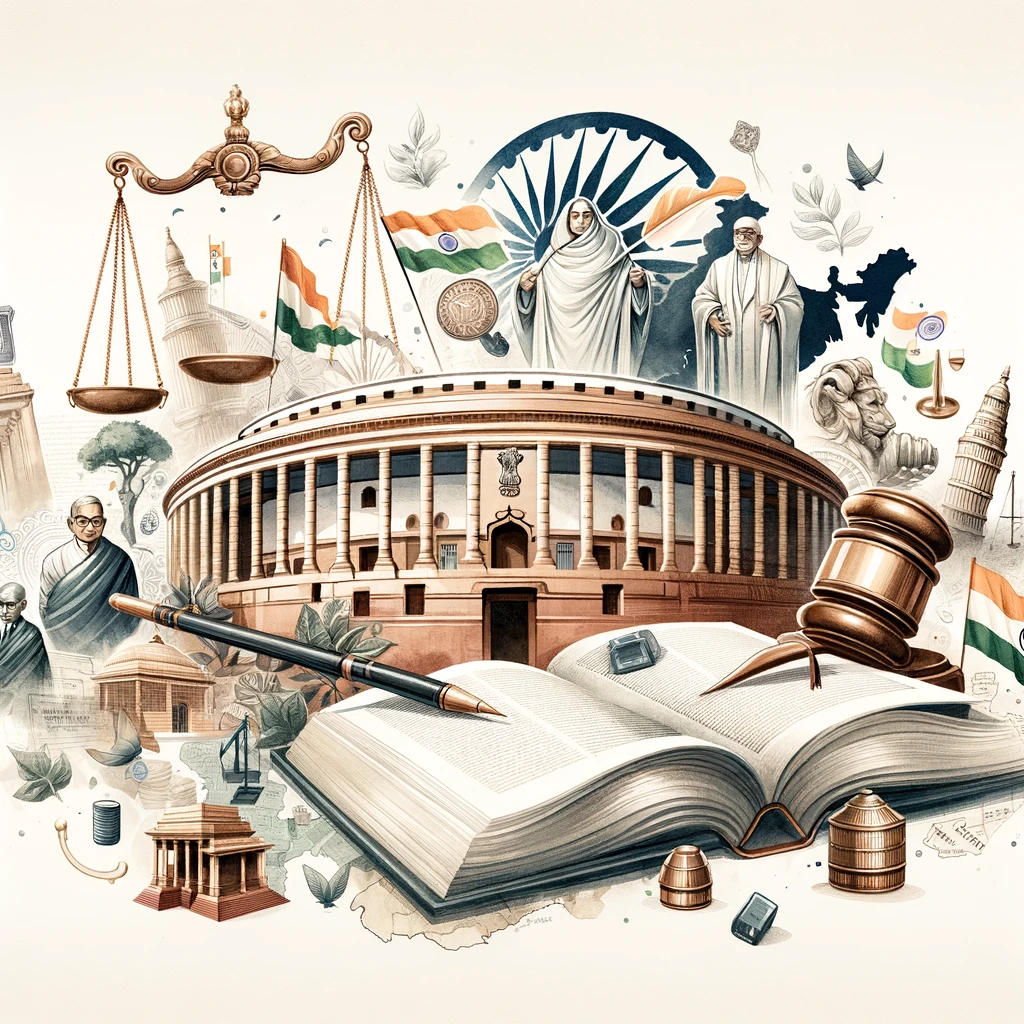The Indian Constitution is a remarkable document, known for its comprehensive nature and the incorporation of diverse features from various global constitutions. This comparative analysis highlights the influences, similarities, and unique aspects of the Indian Constitution with other prominent constitutions around the world.

Influence of Other Constitutions on Indian Constitution
The framers of the Indian Constitution meticulously studied various constitutions and selectively adopted features suited to Indian needs.
- Government of India Act 1935: Provided the administrative details and federal structure.
- British Constitution: Inspired the parliamentary system, rule of law, legislative procedures, and the concept of a single citizenship.
- US Constitution: Influenced the inclusion of fundamental rights, judicial review, and the structure of the Supreme Court.
- Irish Constitution: Guided the adoption of Directive Principles of State Policy.
- Canadian Constitution: Contributed to the federal system with a strong central authority and residuary powers.
- Australian Constitution: Influenced the provisions related to trade, commerce, and the concurrent list.
These borrowed features ensured that the Indian Constitution was not only comprehensive but also adaptable to the country’s diverse socio-political landscape.

Presidential vs Parliamentary System
The Indian Constitution adopts a parliamentary system of government, in contrast to the presidential system of the United States.
- Executive Head: In the US, the President is both the head of state and the government, elected separately from the legislature. In India, the President is the ceremonial head of state, while the Prime Minister is the head of government, drawn from the majority party in the legislature.
- Separation of Powers: The US Constitution establishes a clear separation of powers among the executive, legislative, and judicial branches. The Indian Constitution, while maintaining separation, integrates the executive and legislative branches through the parliamentary system.
- Checks and Balances: The US system has a strong mechanism of checks and balances, with the President, Congress, and Supreme Court each having distinct powers. India’s system ensures executive accountability to the legislature, with the Parliament having the authority to question and remove the executive through votes of no confidence.

UK vs Indian Constitution: Unwritten vs Written Constitution
The UK operates on an unwritten constitution based on conventions, statutes, and judicial precedents, whereas India has a written and codified constitution.
- Codification: The Indian Constitution is a single, comprehensive document that codifies laws, principles, and government functions. The UK’s constitution is scattered across various sources, including statutes like the Magna Carta, judicial decisions, and conventions.
- Flexibility: The UK’s unwritten constitution is highly flexible, allowing changes through simple legislative processes. The Indian Constitution, while flexible, has a structured amendment process, ensuring stability and consistency.
- Rule of Law: Both constitutions emphasize the rule of law, though the Indian Constitution explicitly codifies fundamental rights and duties, whereas the UK’s legal framework evolves through judicial interpretations and parliamentary sovereignty.
Canadian Influence: Federal System and Residuary Powers
The Indian Constitution’s federal structure with a strong central government is influenced by the Canadian model.
- Federal Structure: Both India and Canada have a federal system where powers are divided between the central and provincial governments. However, India’s central government has more authority, reflecting the need for unity in a diverse nation.
- Residuary Powers: In Canada, residuary powers (those not specifically allocated to either level of government) rest with the central government. India adopts a similar approach, with the Union government holding residuary powers, ensuring a strong central authority to manage nationwide issues.
This influence ensures a balance between regional autonomy and national unity in India’s federal setup.

Directive Principles and Nomination to Rajya Sabha
The Indian Constitution draws significant inspiration from the Irish Constitution, particularly in social and economic governance.
- Directive Principles of State Policy: Inspired by the Irish Constitution, these principles aim to guide the state in creating a just society. They are non-justiciable but fundamental in governance, covering aspects like social justice, economic welfare, and international peace.
- Nomination to Rajya Sabha: The practice of nominating members to the Rajya Sabha (Upper House) by the President, particularly individuals with special knowledge or practical experience in fields like literature, science, art, and social service, is influenced by the Irish system of nominating distinguished individuals to the Seanad Éireann (Senate).
Unique Features of Indian Constitution
The Indian Constitution is unique in its blend of rigidity and flexibility, enabling it to adapt while maintaining its core principles.
- Amendment Process: Article 368 provides a detailed amendment process, categorized into different levels of rigidity. Some amendments require a simple majority, others a special majority, and some need ratification by half the state legislatures.
- Judicial Review: The Constitution empowers the judiciary to review and invalidate unconstitutional amendments, ensuring that the core values remain intact.
- Adaptability: Despite its detailed provisions, the Constitution allows for flexibility through amendments, enabling it to address emerging challenges and socio-political changes.
This blend ensures the Constitution’s durability and relevance, capable of evolving with the nation’s needs while preserving its fundamental framework.
Conclusion
The Indian Constitution, with its rich tapestry of borrowed features and unique elements, stands as a testament to thoughtful integration and adaptation. By comparing it with other prominent constitutions, we appreciate its depth, flexibility, and robustness. For UPSC aspirants, understanding these comparative aspects is crucial for a nuanced grasp of constitutional law and governance, reflecting the Indian Constitution’s ability to harmonize diverse influences into a cohesive and dynamic framework.



